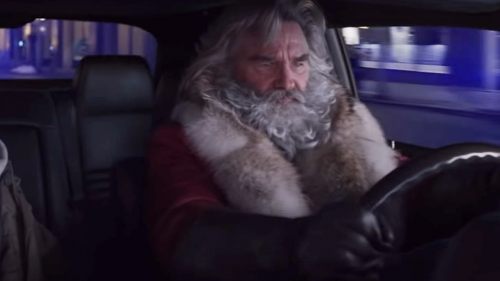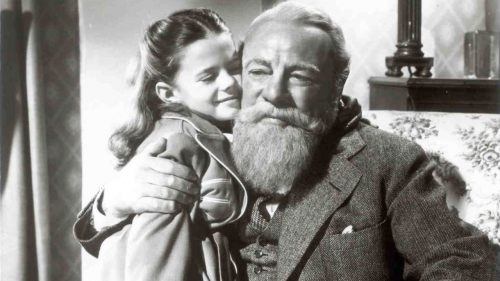Book Review: YULETIDE TERROR, Your New Guide To Christmas Horror Movies And TV
We talk a lot about our favourite Christmas movies around this time of year, and a ton of people go the “subversive” route and pick a horror movie. But as Spectacular Optical’s new book release Yuletide Terror: Christmas Horror On Film And Television points out, scary Christmas stories aren’t nearly as rare or subversive as those people might think.
Coming from Spectacular Optical - the press that put out wonderful niche culture books like House of Psychotic Women, Satanic Panic, and Kid Power - you’d expect the 488-page Yuletide Terror to contain a comprehensive catalogue of relevant essays and interviews. And it definitely does that: essays and interviews from luminaries like Kier-La Janisse, Kim Newman, Michael Gingold, Andrea Subissati, Zack Carlson, and more examine classics from Black Christmas to Krampus, as well as more niche films like Silent Night, Bloody Night, P2 (much to Brian Collins’ delight), and even weird shit like Santa and the Ice Cream Bunny. Television gets covered in-depth too, given that seasonal specials are a thing TV does especially well. There's a lot going on here.
But it’s the deeper cultural dives that make Yuletide Terror a truly fascinating read. Multiple essays explore the background that makes Christmas such a fertile ground for horror, and that backstory may surprise many readers. Turns out the Christmas horror tradition actually goes back further than you might imagine - centuries, in fact, back to the days of Winter’s Tales and the like. It’s a winter solstice festival, after all, where the days are short and dark and cold - a perfect environment for telling ghost stories around a fire. Charles Dickens’ A Christmas Carol repopularised the connection between ghosts and Christmas at a time when Christmas itself was also undergoing a major popularisation in England, thanks to Prince Albert’s importing of German traditions, and that only continued in the century that followed.
Interestingly, the separation of ghost stories from Christmas into Halloween over the past couple centuries (a separation that has since leeched into global culture) can be largely attributed to American Protestantism. As Derek Johnston’s essay “Why The Ghost Story At Christmas?” illustrates, Protestant beliefs negate the potential existence of rogue spirits, which pushed them away from Christmas towards a more secularised Halloween. (People can’t not have ghost stories, after all.) But the more significant Catholic presence in the United Kingdom led to a much more substantial horror presence at Christmastime, expressed via Christmas specials from the classic series A Ghost Story For Christmas (a terrific, creepy episode of which screened at the book’s launch) to modern-day Christmas horror specials like those of Black Mirror and The League of Gentlemen. That’s a fascinating twist on the notion that Christmas horror movies are seriously subversive: while they disagree with the wholesome American Christmas tradition, they’re right at home in Britain.
Elsewhere, essays deal with Santa Claus’ origins in terrifying folk mythology (including looks at Rare Exports, Krampus, and several straight-to-video shitters), and the cultural response to horror’s perversion of Christmas iconography, while a colour section compiles comics, stills, and posters from many of the titles explored in the book. An astonishingly comprehensive index lists and capsule-reviews titles from the mainstream to the obscure - ideal for the list-checking completionist, though it leaves out Bill Goldberg’s terrible Santa’s Slay, which lurked unrented on shelves in my video store days. On the other hand, even very recent films like Better Watch Out (nee Safe Neighbourhood), Super Dark Times, and Anna and the Apocalypse managed to make the cut before the book went to press, though the most recent releases are relegated to press notes only.
Though each of Yuletide Terror’s essays and interviews is excellent, informative, and impassioned (to the extent that the various authors seem to jostle to claim their particular subject is the subgenre’s pivotal moment), the overall takeaway of the book is that there’s too much material to cover in a single tome. A Christmas Carol alone - dealt with mostly in a single chapter - has seen over four hundred adaptations (!), and there’s only so many that can be focused on in a brief essay. But for a book like this, leaving you anxious to read and watch more material is a solid outcome. Yuletide Terror is an entertaining and wide-reaching look into a fascinating subgenre and cultural phenomenon, and a must-read for horror fans. Just be sure to budget in some time (and budget in some budget) to watch a whole bunch of movies and TV once you’ve read it.
Read an excerpt from Stephen Thrower's essay "Ringing The Changes: Black Christmas" right here on BMD; buy the book from Spectacular Optical via its website.



